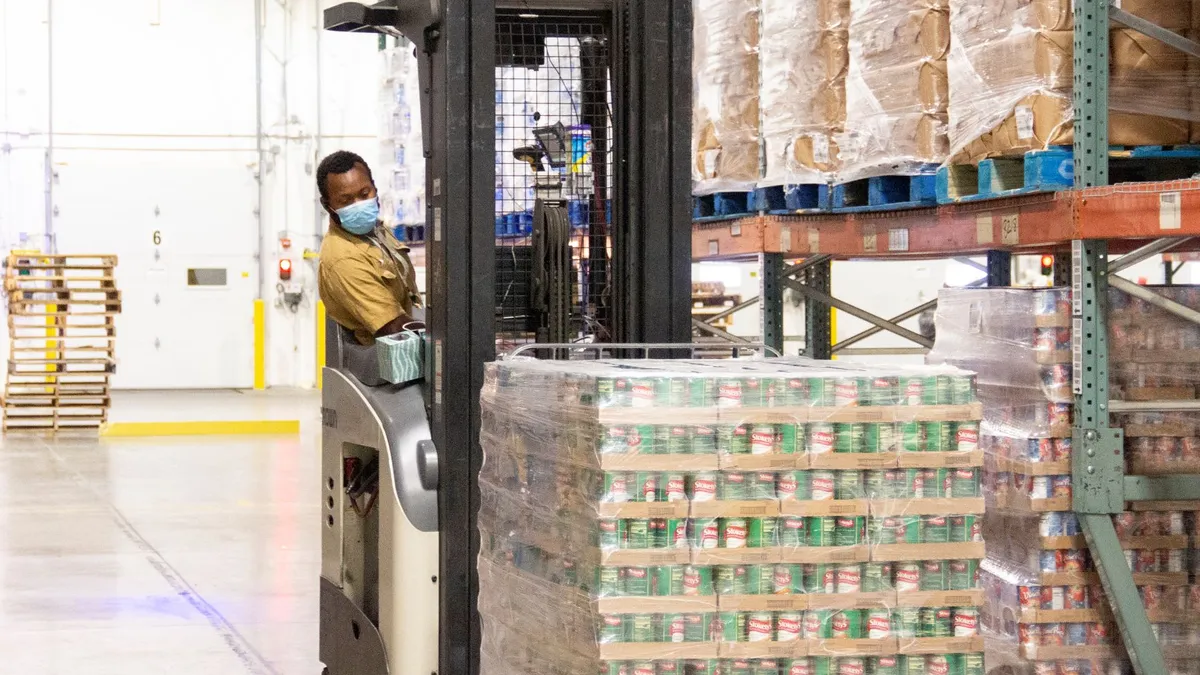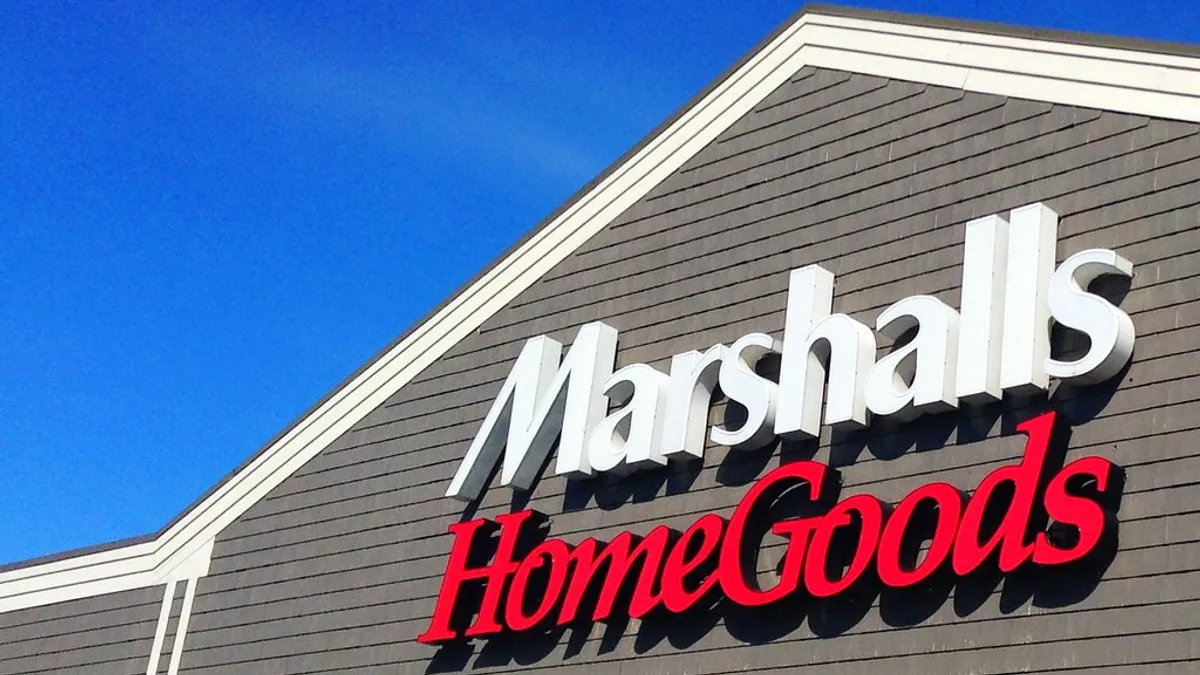Food banks across the country have seen an unprecedented rise in demand, a trend that will continue into the holidays.
These organizations operate similarly to other food distributors, but they face challenges adapting to growing demand, such as limited warehouse space and the financial constraints of a nonprofit.
"We thought the food was going to be a challenge. There were enough donations. The real problem has been in operations. Storing it, getting it through the system, processing it and assembling boxes to give to a family," said Ignacio Felix, a partner in McKinsey's Miami office and global leader of the manufacturing and supply chain work in consumer goods.
The growing demand is pushing many food banks beyond their limits, driving them to look to ingenuity and flexibility to operate in this new time. Optimizing warehouse space and operations will be more critical than ever as food banks enter the holiday season.
A surging movement through the supply chain
Even before the pandemic, food insecurity was a growing problem in the United States. The pandemic has only exacerbated the situation, and more than 50 million Americans will face food insecurity by the end of 2020, according to Feeding America.
The Food Bank of Central and Eastern North Carolina covers 34 of the state's 100 counties and has seen a tremendous surge in volume since the start of the pandemic, said Charlie Hale, vice president of operations and programs. While the food bank has six facilities and a 108,000-square-foot warehouse hub in Raleigh, the supply chain's intricacies have made operations challenging, Hale said.

"It used to be we could order a tractor-trailer load of tomato soup and get it in two weeks, and suddenly it was eight to 12 weeks. Everything was pushed way out," Hale said. "There was a confluence of things happening that just sent the supply chain sideways," Hale said.
At the onset of the pandemic, growing volume at grocery retailers and closures at restaurants limited the flow of donations. Distributors had longer lead times.
When the food did start coming in, pressure mounted to get it out as quickly as possible. Unlike a traditional food distributor that delivers to restaurants and groceries on a fixed schedule and relatively predictable scale, food banks must quickly distribute mass amounts of food, sometimes at a moment's notice.
"It used to be we could order a tractor-trailer load of tomato soup and get it in two weeks, and suddenly it was eight to 12 weeks."

Charlie Hale
Vice president of operations and programs at the Food Bank of Central and Eastern North Carolina
Nearly all food banks have experienced a spike in demand throughout the year. Second Harvest Heartland supplies 1,000 food programs in 59 counties in Minnesota and western Wisconsin. As of early November, it had distributed more than 126 million pounds of food, compared to 119 million all of the previous year, said David Laskey, director of enterprise efficiency and facilities management.
Like most food banks, Second Harvest Heartland receives food from a mix of sources, including grocers, distributors and cash donations. Some donations from grocery stores are near the manufacturer's date, Laskey said, meaning they're suitable for consumption but must be distributed quickly.
"Sometimes, that turnaround can be within 24 to 48 hours," Laskey said. "They've got to keep it moving because food doesn't last forever."

Warehouses: Making the most of the space
While food banks struggle with the overnight growth in their supply chains, warehouse optimization is a powerful lever to improve flow, Felix said.
The management consulting company estimates that food banks can improve throughput by 20% to 30% by streamlining warehousing.
"It's really about operations and best practices," Felix said. "Making the most of what they have and improving efficiency."
"The real problem has been in operations. Storing it, getting it through the system, processing it and assembling boxes to give to a family."

Ignacio Felix
Partner in McKinsey's Miami office and global leader of the manufacturing and supply chain work in consumer goods
McKinsey worked with Feeding South Florida early in the pandemic to help the food bank optimize its operations and warehouse infrastructure. While FSF looked to new food sources and stepped up labor, it needed a strategic analysis to address storage space.
FSF overhauled its warehouse operations in June 2020. "Many of the principles are the same in terms of efficient receiving of materials and goods, putting it away, warehousing, scanning, and making it as efficient as possible," Felix said.
FBCENC's warehouse space wasn't able to keep pace when distribution doubled in March. One thing it did was enable Coronavirus Food Assistance Program distributors to take food directly from partner agencies. Out of 17 million pounds of additional CFAP food, Hale reduced warehouse demands by routing seven million pounds directly from food distributors to food pantries and kitchens.
"It was food that flowed through the network that we didn't even have to touch," Hale said.
Hale also rented tractor-trailers and freezer trailers across the bank's six facilities to store excess supplies and move them through the system as quickly as possible. By focusing efforts on turnover, Hale significantly reduced demands on warehousing.
"Rather than acquiring more space, we just sped up flow through our system. It comes in, it goes. It comes off one truck and sometimes goes right on another to be delivered," he said.

Second Harvest Heartland supplies 1,000 food programs in 59 counties in Minnesota and western Wisconsin.
In Minnesota, Second Harvest Heartland lucked out that it just so happened to be in the process of moving from a 75,000-square-foot distribution center to a new 230,000-square-foot center as the pandemic hit.
"It happened overnight literally. Construction wrapped up in February, and when COVID hit, we moved in as fast as we could and just ramped up," Laskey said. Food demand is still up 30% and is expected to spike during the holidays.
For any food bank, tracking and keeping a close eye on KPIs can significantly improve throughput and warehouse optimization, Felix said. Food banks can look to best practices in grocery distribution, especially related to operating systems, how warehouses operate and where things are stored.
"Food banks will have to rethink what their new normal will be and how they'll operate," Felix said.
This story was first published in our weekly newsletter, Supply Chain Dive: Operations. Sign up here.
Clarification: This piece has been updated to include western Wisconsin in Second Harvest Heartland's service area.






















